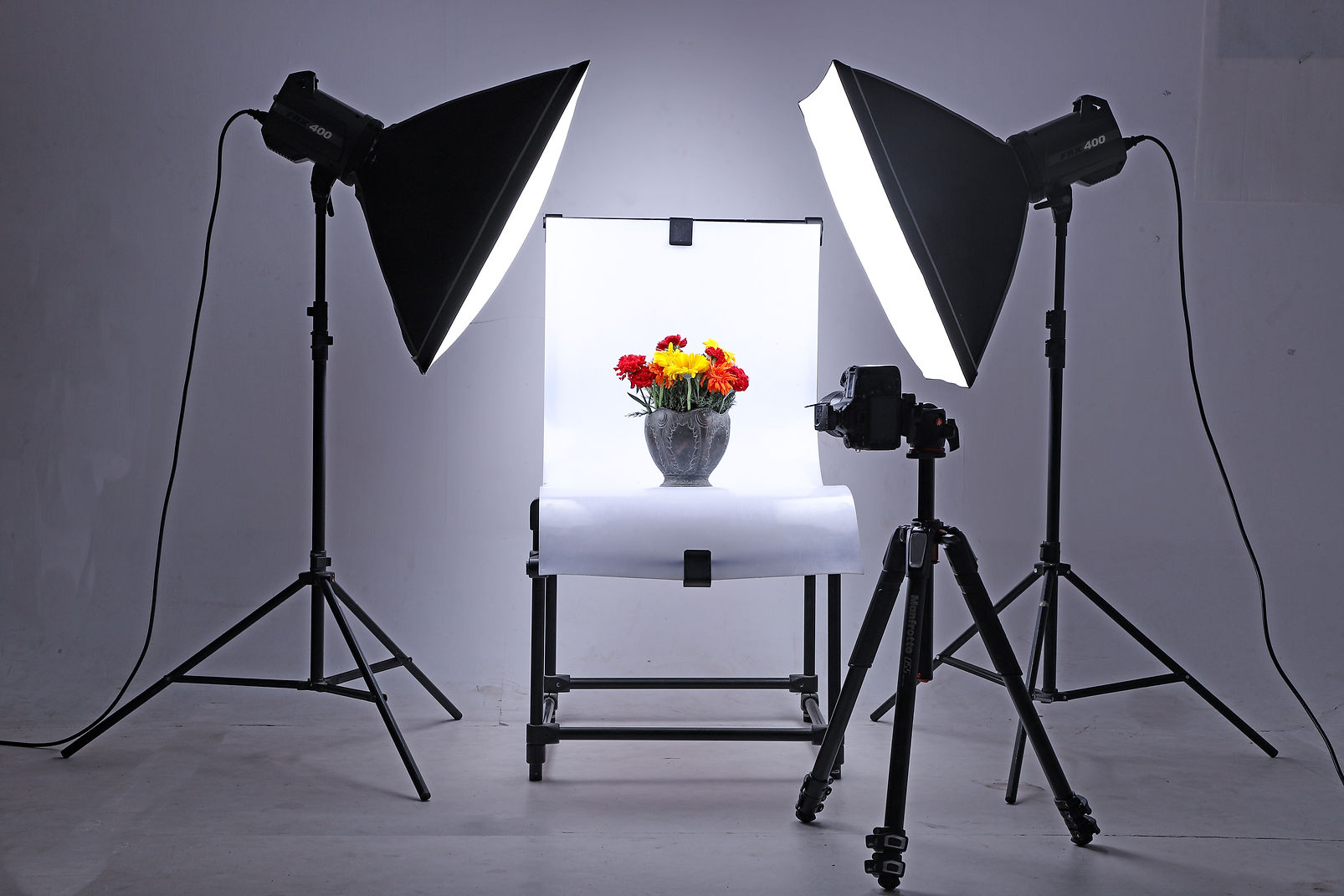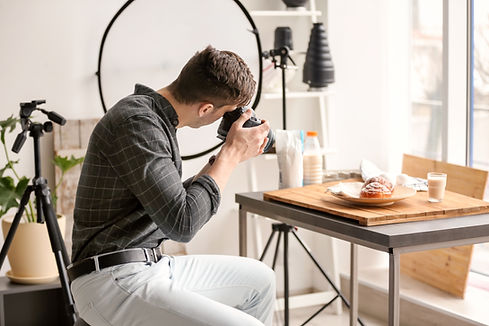.png)
Understanding Light Modifiers

Softbox
Softboxes are light modifiers commonly used in photography to create a soft and diffused light source. They consist of a wireframe box with a layer of diffusion material that helps to spread and soften the light emitted from an artificial source, such as a studio strobe or continuous light.
One of the primary purposes of using a softbox is to minimize harsh shadows. The diffused light produced by a softbox creates a more even and gentle illumination, resulting in softer transitions between light and shadow. This makes softboxes ideal for various photography genres, including portraits, fashion, product photography, and more.
The size of a softbox plays a crucial role in determining the spread of light. Larger softboxes produce more diffused light, covering a broader area. They are suitable for scenarios where you need to illuminate larger subjects or capture wider scenes. On the other hand, smaller softboxes offer more concentrated and localized lighting, making them ideal for close-up shots or when you need precise control over the light.
When working with softboxes, it's essential to consider their portability and the equipment required to support them. Larger softboxes tend to be heavier and bulkier, requiring sturdy light stands and additional counterweights for stability. They may also occupy more space in your studio and require ample storage when not in use. It's crucial to assess the size of your shooting environment and the equipment you have to ensure compatibility and convenience.
In summary, softboxes are versatile light modifiers that help photographers achieve a soft and diffused lighting effect. By reducing harsh shadows and providing gentle illumination, they enhance the overall quality and aesthetic appeal of photographs across different genres.

Reflector
A reflector is a tool used in photography to redirect existing light onto a subject or scene. It does not emit light itself but instead bounces or reflects the available light. Reflectors are commonly used to create fill light, reduce shadows, or manipulate the lighting conditions to achieve a desired effect.
There are four main types of reflectors commonly used in photography:
Silver Reflectors: These reflectors are frequently used in studios as they bounce back the most light. The silver surface maintains the color neutrality of the reflected light, making it suitable for various applications, especially portraits. They work well at different distances from the subject.
White Reflectors: White reflectors offer flexibility for both indoor and outdoor use. They reflect less light compared to silver reflectors, making them a good choice for situations where a softer, more subtle effect is desired. White reflectors are versatile and work well for product photography.
Gold Reflectors: Gold reflectors are primarily used outdoors to capture and amplify the warm tones of sunlight. When used indoors, the reflected light takes on a strong, yellowish hue, which can be useful for specific creative purposes. They are ideal for outdoor photography, particularly during sunrise or sunset, to enhance the golden light.
Black Reflectors: Unlike other reflectors, black reflectors absorb light rather than reflecting it. They are useful in situations where you need to reduce or block excessive light from reaching the subject. Black reflectors are commonly used in studio setups to create controlled lighting and define the subject's shape or contours.
When using a reflector, there is no specific correct position. It requires experimentation and adjustment to find the best angle and placement for the reflected light. Moving the reflector around while observing how the light interacts with the subject helps achieve the desired effect. Using an assistant or a reflector boom arm can help hold the reflector in place once the desired position is found.
Each type of reflector provides unique opportunities to enhance and improve the lighting in photography, allowing for creative control and manipulation of the light to achieve the desired results.
Softbox
Softboxes are light modifiers commonly used in photography to create a soft and diffused light source. They consist of a wireframe box with a layer of diffusion material that helps to spread and soften the light emitted from an artificial source, such as a studio strobe or continuous light.
One of the primary purposes of using a softbox is to minimize harsh shadows. The diffused light produced by a softbox creates a more even and gentle illumination, resulting in softer transitions between light and shadow. This makes softboxes ideal for various photography genres, including portraits, fashion, product photography, and more.
The size of a softbox plays a crucial role in determining the spread of light. Larger softboxes produce more diffused light, covering a broader area. They are suitable for scenarios where you need to illuminate larger subjects or capture wider scenes. On the other hand, smaller softboxes offer more concentrated and localized lighting, making them ideal for close-up shots or when you need precise control over the light.
When working with softboxes, it's essential to consider their portability and the equipment required to support them. Larger softboxes tend to be heavier and bulkier, requiring sturdy light stands and additional counterweights for stability. They may also occupy more space in your studio and require ample storage when not in use. It's crucial to assess the size of your shooting environment and the equipment you have to ensure compatibility and convenience.
In summary, softboxes are versatile light modifiers that help photographers achieve a soft and diffused lighting effect. By reducing harsh shadows and providing gentle illumination, they enhance the overall quality and aesthetic appeal of photographs across different genres.
Umbrella
An umbrella, in the context of photography, is a portable and affordable light modifier used to modify and control the quality of light from a light source. It can be used with various types of lights, such as sunlight, speedlites, strobes, monolights, and continuous light sources.
There are two main styles of umbrellas: shoot-through umbrellas and reflective umbrellas.
A shoot-through umbrella allows the light source to pass through the translucent fabric, creating a broad and diffused light. When the light source is placed close to the subject, the shoot-through umbrella can produce soft and flattering light with gentle shadows. The umbrella is positioned between the light source and the subject, directing the light towards the subject.
On the other hand, a reflective umbrella features a reflective interior surface that bounces the light back toward the subject. The light source is positioned away from the subject, facing the reflective surface of the umbrella. This setup results in a softer, more spread-out light with slightly more directional control compared to the shoot-through umbrella.
Photographers often choose between shoot-through and reflective umbrellas based on their desired lighting effect. Shoot-through umbrellas provide a larger and softer light source, ideal for creating a gentle and diffused illumination. Reflective umbrellas offer a more directional and controlled light, suitable for situations where a bit more control over the light spread is desired.
Umbrellas are lightweight, easy to set up, and portable, making them a popular choice among photographers, particularly for on-location shoots or when working with limited space. They provide an affordable and versatile option for modifying and shaping light, allowing photographers to achieve different lighting effects and enhance their creative vision.
